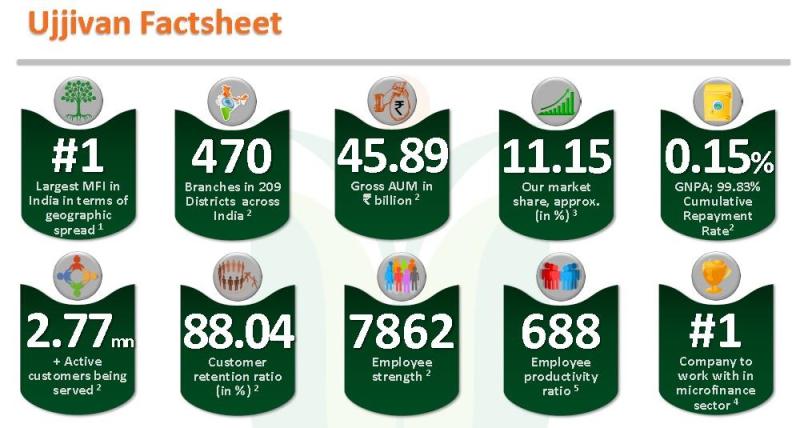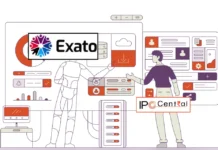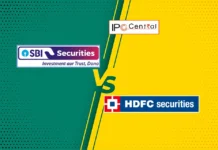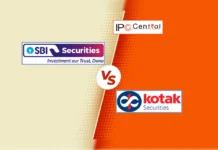Ujjivan IPO is open for subscription is open to subscription in the price band of INR207-210 per share between 28 April and 2 May 2016. Applications can be made for 70 shares and in multiples thereafter. According to the price band, Ujjivan Financial’s issue size is in the range of INR875 crore (INR8.75 billion) and INR882.5 crore. The upcoming IPO will be managed by Kotak Mahindra Capital Company Limited, Axis Capital Limited, ICICI Securities Limited and IIFL Holdings Limited while Karvy Computershare Private Limited will be the registrar.
Ujjivan IPO comes after a superb listing of Equitas Holdings which means investors will be looking forward for this IPO with great interest. Read more to find out in this IPO review if this public issue has the potential to reward investors. Ujjivan’s equity shares are proposed to be listed on BSE and NSE and listing is expected on 10 May. Here are some important details about the IPO before we delve deeper in the analysis.
Ujjivan IPO details
| IPO dates | 28 April – 2 May 2016 |
| Price Band | INR207 -210 per share |
| Issue Size | INR875 – 882.5 crore |
| Fresh Issue | INR358.2 crore |
| Offer for share (OFS) | 24,968,332 shares (INR524.3 crore at upper band) |
| Minimum Bid | 70 shares |
| Retail allocation | 35% |
Ujjivan IPO structure
The upcoming IPO will raise INR358.2 crore by issuing new shares while existing shareholders will sell 24,968,332 shares (worth INR524.3 crore at the upper price band). Shareholders participating in the IPO are CX Partners (through Elevar), FMO (Nederlandse Financierings-Maatschappij Voor Ontwikkelingslanden N.V.), IFC (International Finance Corporation), IFIF (India Financial Inclusion Fund), MUC (Mauritius Unitius Corporation), Sarva Capital, WCP Holdings and WWB (Women’s World Banking Capital Partners, L.P.). Majority of selling shareholders have average cost of acquisition between INR57 and INR68 per share.
CDC is the biggest shareholder in Ujjivan Financial Services with 10.8% and will stay invested in the company as it is not participating in the IPO. IFC and CX Partners own 10.08% and 10.66%, respectively and both will be selling some of their shares through the IPO. Sequoia Capital is another prominent name among its investors but will not be participating in the public offer. The trend of existing shareholders to stay invested is something we like about the IPO.
Biggest shareholders in Ujjivan Financial Services | ||
| Name of shareholder | Equity Shares | Percentage (%) |
| CDC Group Plc | 10,932,696 | 10.80 |
| Alena Private Limited | 10,790,943 | 10.66 |
| International Finance Corporation | 10,202,406 | 10.08 |
| NewQuest Asia Investments II Limited | 8,199,522 | 8.10 |
| Elevar Equity Mauritius | 6,355,684 | 6.28 |
| Sarva Capital LLC | 5,870,426 | 5.80 |
| Women’s World Banking Capital Partners, L.P. | 5,406,628 | 5.34 |
| Bajaj Holdings & Investment Limited | 5,124,702 | 5.06 |
| Sequoia Capital India Investments III | 4,201,276 | 4.15 |
| India Financial Inclusion Fund | 3,508,772 | 3.47 |
| Total | 70,593,055 | 69.77 |
Source: Ujjivan Financial Services’ Red Herring Prospectus
Use of funds
The company will get INR358.2 crore from the IPO which are planned to be used to augment the capital base of the company to meet future capital requirements.
Ujjivan business background
As with most microfinance companies, Ujjivan’s underlying theme is financial inclusion. However, it differentiates itself by focusing on urban and semi-urban poor. Started in 2005 by Samit Ghosh, the company’s business is primarily based on the joint liability group lending model for providing collateral free, small ticket-size loans to economically active women. Ujjivan also offers individual loans to Micro & Small Enterprises (MSEs).
As of 31 December 2015, Ujjivan Financial had operations spread across 24 states and union territories, and 209 districts across India. The company served over 2.77 million active customers through 470 branches as of December 2015. Employing 7,862 workers, Ujjivan’s gross assets under management (AUM) stood at INR45.89 billion as of December 2015. The company had approximately 11.15% of market share of the NBFC-MFI business in India as of 30 September 2015.

While its initial focus was on the urban and semi-urban poor, Ujjivan has gradually catered to an increasing number of rural customers. As of December 2015, approximately 29%, 37% and 34% of its total customers comprise of rural, semi-urban and urban customers, respectively.
Financial performance
Ujjivan Financial Services has been a consistent performer in terms of the financial performance department. From FY2011, its total income has grown with a compounded average rate of 40.6% while profits grew at an average rate of 59.5%. Much of this growth has come in the last couple of years. For FY2015, Ujjivan’s net profit rose 38% from INR58.4 crore to INR75.7 crore while net revenues grew 71.1% to INR611.8 crore.
This growth has continued in the nine months of FY2016 as well and has already exceeded its FY2015 performance. In the nine months, Ujjivan has grossed total revenue of INR729.6 crore but profits grew even higher at INR122.3 crore. This means that Ujjivan’s net profit margin improved to 16.8% in this timeframe. This is excellent performance and we can’t ask for anything better.
Ujjivan’s financial performance (in INR crore) | |||||
| FY2011 | FY2012 | FY2013 | FY2014 | FY2015 | |
| Total revenue | 156.4 | 156.3 | 233.9 | 357.6 | 611.8 |
| Total expenses | 139.1 | 156.4 | 186.2 | 268.8 | 497.3 |
| Profit/(loss) after tax | 11.6 | 0.1 | 32.8 | 58.4 | 75.7 |
| Net profit margin | 7.4 | 0.1 | 14.0 | 16.3 | 12.4 |
Source: Ujjivan Financial Services’ Red Herring Prospectus
Ujjivan IPO: Should you invest?
Being in the same business, Ujjivan Financial Services has a lot of similarities with Equitas IPO which has rewarded investors handsomely. Just like Equitas, Ujjivan is also one of the 10 companies which last year won in-principle approval from the Reserve Bank of India (RBI) to set up small finance bank (SFB). According to guidelines for SFBs, Ujjivan needs to bring down foreign shareholding to 49% by 6 April 2017. As of now, 77.1% equity of Ujjivan is with foreign shareholders and the IPO is an attempt to bring down this share to below 49%. Since this is a regulatory requirement, profit maximization by existing shareholders is not the priority. Thanks to the RBI, investors are seeing some real money being left on the table. After IPO, foreign shareholding will come down to 44% and there could be a competition among institutional investors to buy the shares from the secondary market.
But what about valuations? Well, at the upper end of the price band, the Ujjivan is asking for a price earnings ratio (PE ratio) of 19.8 on FY2015 profits. Things get better when we start seeing the things on a forward basis. Ujjivan’s diluted earnings per share for nine months of FY0216 stood at INR13.37 which takes annualized EPS to INR17.8. At the offer price of INR210 per share, this translates to a PE ratio of just 11.8. These are exceptionally attractive valuations and way less than its listed peers Sundaram Finance Limited and SKS Microfinance Limited. Even Equitas allotted shares at a price of 24.6 times its FY2015 earnings.
And here is a word about management – Ujjivan is led by Samit Ghosh who has been a member of the international banking community for over 30 years and had successfully led the launch of retail banking for Standard Chartered in the Middle East and South Asia, and for HDFC Bank in India. In the past, he has also served as president of MFIN, which is an umbrella self-regulatory organization for MFIs. While Samit started the company, he holds just 1,003,100 shares or 0.99% in the company. Clearly, the objective behind starting Ujjivan Financial Services was not making money but to fulfill a stellar career.
Executive compensation is fair and does not look excessive to us. This is another positive and will make a solid base going forward as the microfinance lender transforms itself into a bank. Although Ujjivan has a formidable network of offices across the nation, notable exceptions in its geographical presence are Andhra Pradesh and Telangana where it has no offices or branches. This is a conscious decision to avoid the overcrowded market and shows the clear thinking of the management. Although it will have to expand into these states after becoming a bank, past performance indicates the management can be expected to take good decisions in the best interests of shareholders.
In our review, Ujjivan IPO passes the test with flying colors and retail investors should make the most of the opportunity by applying to this IPO. Ujjivan IPO will compete with the public offer of Thyrocare Technologies but investors will do well to apply in both, read our review here.







































Looks good! But at some point this will lock in some cash. I would personally love to get hands on as much as i can. Alas, looks like one will have to do with the pittance that one tends to be allotted during such blockbuster listings.
also, i am a bit worried about regulatory/political overkill. Indians dont like to see too much success coming someone’s way! I am afraid at some point state governments may start ‘banning’ the juicy margins these companies have.
debate…
what will be post ipo fy 17 book value ..coz all this co are valued on book vlaue than pe ratios